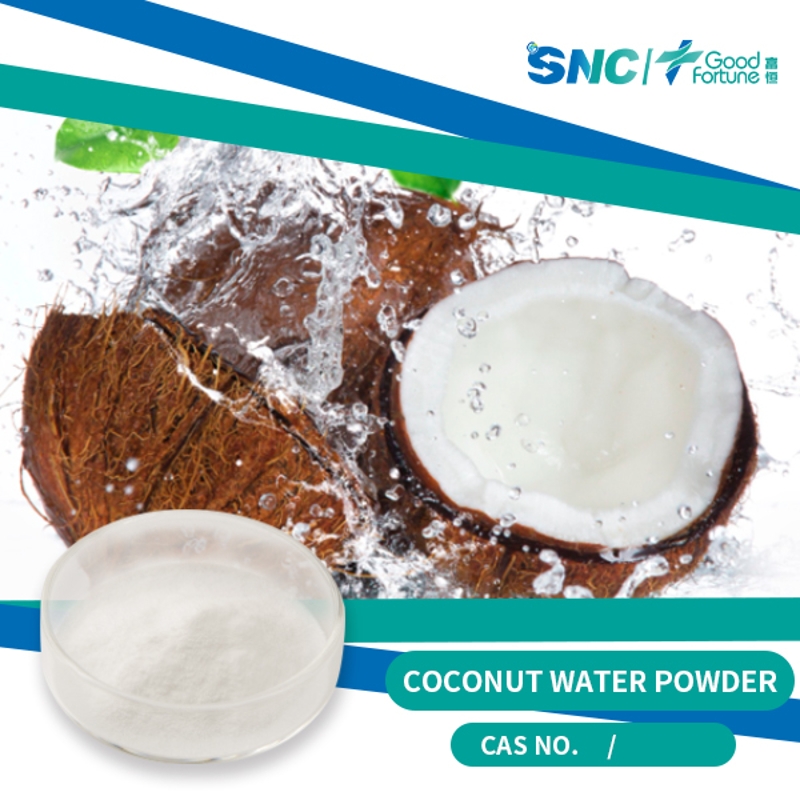-
Categories
-
Pharmaceutical Intermediates
-
Active Pharmaceutical Ingredients
-
Food Additives
- Industrial Coatings
- Agrochemicals
- Dyes and Pigments
- Surfactant
- Flavors and Fragrances
- Chemical Reagents
- Catalyst and Auxiliary
- Natural Products
- Inorganic Chemistry
-
Organic Chemistry
-
Biochemical Engineering
- Analytical Chemistry
-
Cosmetic Ingredient
- Water Treatment Chemical
-
Pharmaceutical Intermediates
Promotion
ECHEMI Mall
Wholesale
Weekly Price
Exhibition
News
-
Trade Service
Traditional salad dressing is an O/W emulsion system with egg yolk as an emulsifier, and its oil content exceeds 70%, which has potential risks of obesity, cardiovascular and cerebrovascular diseases
.
Pickering emulsion is a kind of emulsion prepared by using granular emulsifier instead of traditional small molecule surfactant .
Salad dressing ingredients can change the environment of the emulsion system, thereby affecting the quality of the final product
.
.
Pickering emulsion is a kind of emulsion prepared by using granular emulsifier instead of traditional small molecule surfactant .
Salad dressing ingredients can change the environment of the emulsion system, thereby affecting the quality of the final product
.
In this study, the effects of three common ingredients, acetic acid, salt and sucrose, on the quality characteristics of 50% oil phase Pickering emulsion-based vegetarian salad dressing were investigated.
Salad dressings were compared in terms of appearance, microstructure, and rheological properties
.
The results show that the particle size of the emulsion is the smallest (47.
0 μm) at pH 2.
5.
At this time, the pH is far from the isoelectric point (pH=4.
5), the net charge of the protein particles is high, and the electrostatic repulsion between the droplets prevents the droplets from agglomerating.
; With the increase of pH, the apparent viscosity of the emulsion first increased and then decreased, and reached the highest point at the isoelectric point, but the emulsion flocculation was more serious at this time
.
The particle size of the emulsion increased significantly with the increase of NaCl concentration, indicating that the electrostatic shielding of NaCl played a leading role, and the electrostatic repulsion between droplets was not enough to maintain the distance between droplets; The thixotropic recovery rate was 81.
13%, showing good smearing properties
.
Sucrose has no significant effect on the change of emulsion particle size, but sucrose dispersed in the continuous phase increases the apparent viscosity of the emulsion by hindering the movement of droplets, and at the same time reduces the thixotropic recovery rate of the emulsion by more than 30%
.
Except for the emulsion samples whose pH was at the isoelectric point, the other samples maintained high stability in the storage test
.
On the basis of analyzing the change laws of emulsion particle size, viscosity, thixotropic recovery and stability, the final selection was carried out under the conditions of pH 3.
5, NaCl 350 mmol/kg and 4 wt% sucrose to carry out a 100 kg pilot scale-up.
The thixotropic recovery rate of salad dressing is close to 100%, and its quality characteristics are close to those of commercial products
.
This study systematically revealed the influence of common salad dressing ingredients on the quality characteristics of emulsion for the first time, and at the same time verified the industrial feasibility of the formula and process through pilot test, and proved its good application prospect
.
Salad dressings were compared in terms of appearance, microstructure, and rheological properties
.
The results show that the particle size of the emulsion is the smallest (47.
0 μm) at pH 2.
5.
At this time, the pH is far from the isoelectric point (pH=4.
5), the net charge of the protein particles is high, and the electrostatic repulsion between the droplets prevents the droplets from agglomerating.
; With the increase of pH, the apparent viscosity of the emulsion first increased and then decreased, and reached the highest point at the isoelectric point, but the emulsion flocculation was more serious at this time
.
The particle size of the emulsion increased significantly with the increase of NaCl concentration, indicating that the electrostatic shielding of NaCl played a leading role, and the electrostatic repulsion between droplets was not enough to maintain the distance between droplets; The thixotropic recovery rate was 81.
13%, showing good smearing properties
.
Sucrose has no significant effect on the change of emulsion particle size, but sucrose dispersed in the continuous phase increases the apparent viscosity of the emulsion by hindering the movement of droplets, and at the same time reduces the thixotropic recovery rate of the emulsion by more than 30%
.
Except for the emulsion samples whose pH was at the isoelectric point, the other samples maintained high stability in the storage test
.
On the basis of analyzing the change laws of emulsion particle size, viscosity, thixotropic recovery and stability, the final selection was carried out under the conditions of pH 3.
5, NaCl 350 mmol/kg and 4 wt% sucrose to carry out a 100 kg pilot scale-up.
The thixotropic recovery rate of salad dressing is close to 100%, and its quality characteristics are close to those of commercial products
.
This study systematically revealed the influence of common salad dressing ingredients on the quality characteristics of emulsion for the first time, and at the same time verified the industrial feasibility of the formula and process through pilot test, and proved its good application prospect
.
The research results were recently published online in the internationally renowned academic journal Food Chemistry (IF=7.
514).
nal Edition” (Jiao, et al.
, 2018, ESI top 1% highly cited, 143 times cited) , another continuation work in the field of Pickering emulsion applications after the research on vegetable protein -based high internal phase Pickering emulsions.
.
Master student Li Sisheng, postdoctoral researcher Jiao Bo and assistant researcher Meng Shi of the Institute of Agricultural Products Processing
, Chinese Academy of Agricultural Sciences are the first authors of the paper, and researcher Liu Hongzhi and Wang Qiang are the corresponding authors .
This research was supported by the Agricultural Science and Technology Innovation Program of the Chinese Academy of Agricultural Sciences (CAAS- ASTIP-2020-IFST) and China Postdoctoral Science Foundation (2020M680777 and 2021T140717) .
514).
nal Edition” (Jiao, et al.
, 2018, ESI top 1% highly cited, 143 times cited) , another continuation work in the field of Pickering emulsion applications after the research on vegetable protein -based high internal phase Pickering emulsions.
.
Master student Li Sisheng, postdoctoral researcher Jiao Bo and assistant researcher Meng Shi of the Institute of Agricultural Products Processing
, Chinese Academy of Agricultural Sciences are the first authors of the paper, and researcher Liu Hongzhi and Wang Qiang are the corresponding authors .
This research was supported by the Agricultural Science and Technology Innovation Program of the Chinese Academy of Agricultural Sciences (CAAS- ASTIP-2020-IFST) and China Postdoctoral Science Foundation (2020M680777 and 2021T140717) .
Original link: https://doi.
org/10.
1016/j.
foodchem.
2021.
131866
org/10.
1016/j.
foodchem.
2021.
131866







